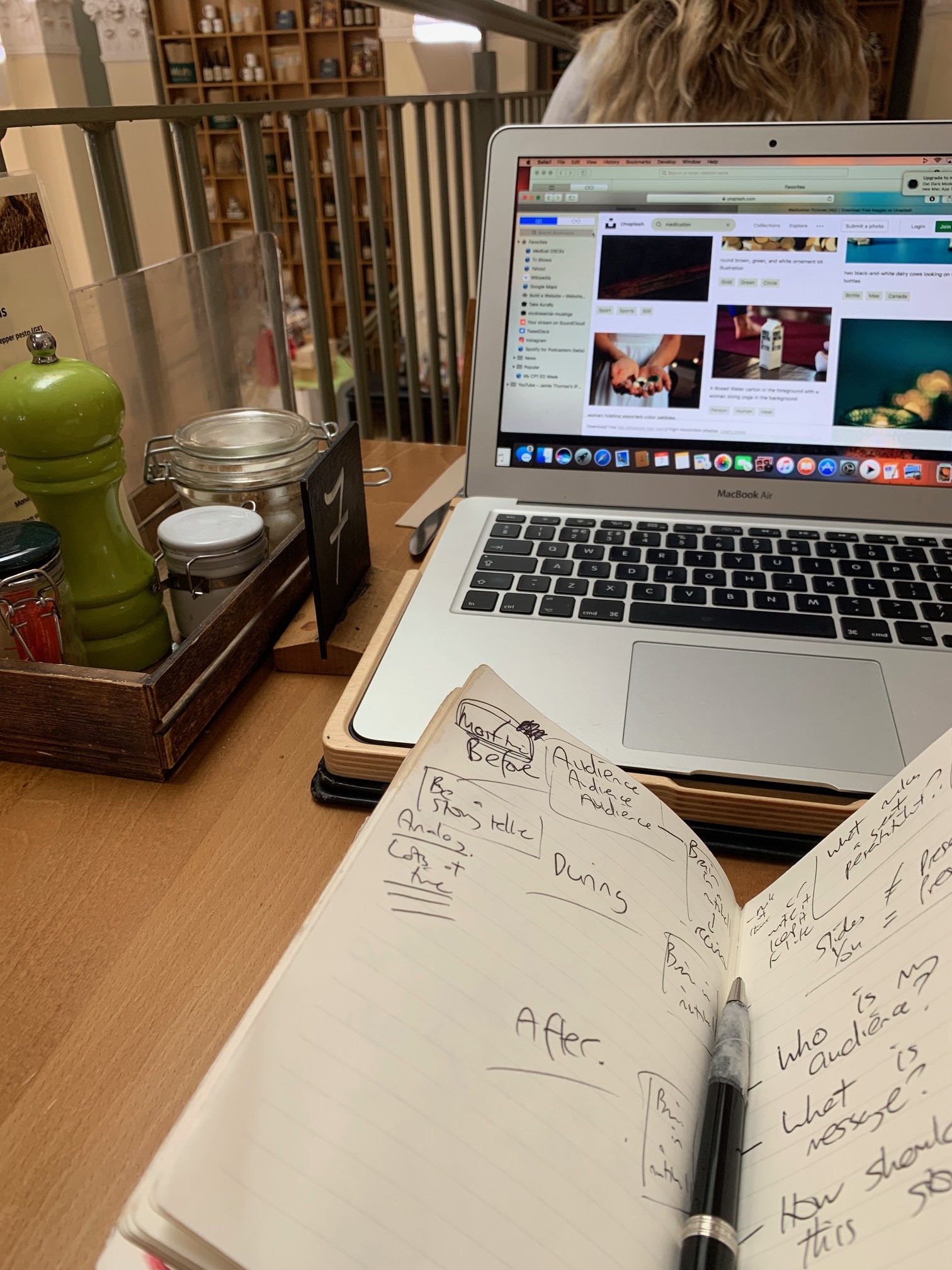Who is my audience?
What is my message?
How should I tell my story?
These are the three questions to answer. In doing so you build your presentation.
Take your time over answering them.
Don’t rush straight to your computer and open up PowerPoint.
Write before you type.
Go analogue. Get a notebook and pen and start writing. Doodle. Answer the questions:
Who is my audience?
What is my message?
How should I tell my story?
Ponder while you walk, while you’re at the gym, in the bath. Wherever. This is a creative process and shouldn’t be rushed. Could be your office. If you’re like me it could be your favourite delicatessen.
If you haven’t already written out your blog, or recorded your podcast or whatever it is, make sure you have. Answer each question and don’t move on to the other until you’re happy you have.
As you make notes and doodle your presentation will take shape. These are doodles on my iPad with Notability that would form the basis for this whole series of blogs:
You may realise that you don’t need slides. If that’s the case don’t use them. Probably the best presentation I ever saw was in Berlin in 2017 from Dr. Annet Alenyo Ngabirano . She was telling us about a child she saw die when she was a medical student. For a large part of her talk she stood there with just a black screen and talked. She didn’t need slides. She didn’t use them. And she kept the audience in the palm of her hand.
I’ve found another, albeit it far less impressive, example of this principle when I teach medical students. Electrocardiograph (ECG) interpretation is an important part of medical learning. One very important ECG to identify is one showing the features of dangerously high potassium (hyperkalaemia). If not treated hyperkalaemia causes cardiac arrest. So I’ll show this ECG on a slide to my students and tell them the three key features: tall tented T waves, wide QRS and flattened P waves.
And they’ll nod. And the next day I’ll ask them, “what are the three key features of hyperkalaemia?” And they’ll look blankly at me.
So now I don’t use the slide. I use the hyperkalaemia dance. I get them to stand up. Most laugh. A few blush. All look awkward. And I get them to copy me doing the hyperkalaemia dance. And then talk me through it. Yes it’s weird but it works.
The next day, the next week I’ll ask them to tell me the ECG features of hyperkalaemia. The responses are usually the same. A giggle. A blush. Most mouth the words. A few even do the movements. But they can all tell me the three features. It works.
One my colleagues James Pratt presented about Advance Clinical Practitioners in Emergency Medicine in 2018. This is his introduction:
Cue a round of applause and everyone’s attention immediately grabbed.
If you don’t need a slide don’t use one.
You should never apologise for a slide. If you have to apologise for a slide don’t use it.
Answer the three questions:
Who is my audience?
What is my message?
How should I tell my story?
Who + What + How = Your Presentation














